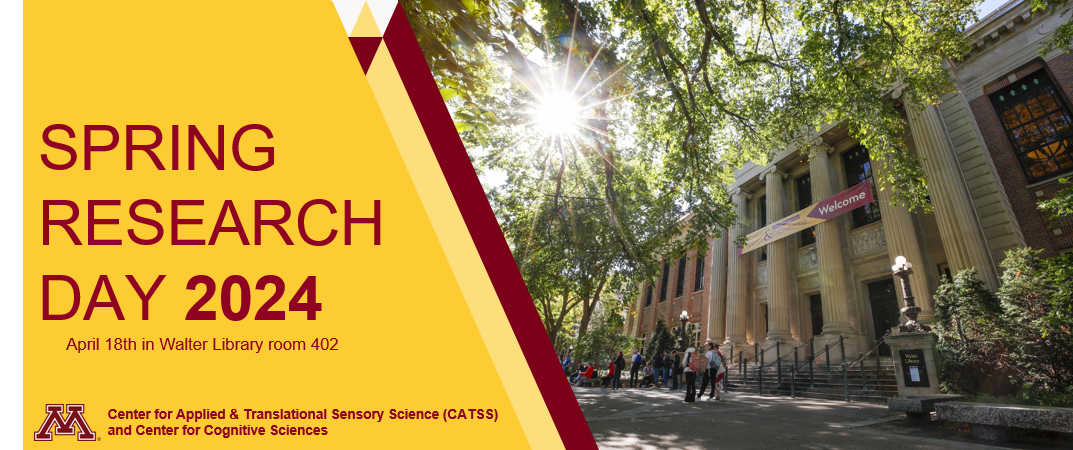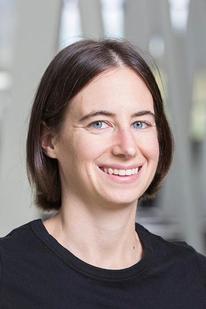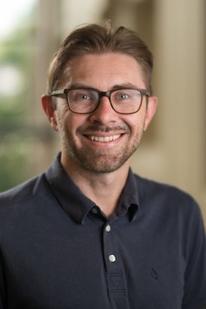
Center for Applied Translational Sensory Sciences (CATSS) presents Spring Research Day 2024! This is an annual, university-wide symposium that showcases outstanding student research.
SUBMIT YOUR ABSTRACTS HERE!
REGISTER FOR THE EVENT HERE!
Event Schedule, April 18th, 2024
12:30pm Sign in
1pm - 2pm Keynote speaker presentation with Dr. Rachel Hawe, PT, DPT, PhD,
Assistant Professor University of Minnesota, School of Kinesiology
2:15pm - 3:45pm Student Poster Session
4pm - 5pm Keynote speaker presentation with Dr. David Brang, PhD
Associate Professor University of Michigan, Department of Psychology
Dr. Rachel Hawe, PhD, DPT

Abstract: Vision is an integral part of motor planning and execution. The role of vision for limb movements may change throughout development and in neurologic conditions such as cerebral palsy and stroke. However, distinguishing between visual and motor impairments can be challenging. This talk will examine various paradigms my lab uses to quantify the influence of vision on motor performance including the use of robotics, gaze tracking, and manipulating visual feedback, as well as their various limitations and challenges. I will discuss gaze strategies used in performing complex unilateral movements and during tasks requiring bilateral coordination. Lastly, I will share results on how movements are altered in the absence of visual feedback, and how assessments can be translated from lab to clinic.
Bio: Rachel Hawe, PT, DPT, PhD is an Assistant Professor in the School of Kinesiology at the University of Minnesota where she directs the NeuroRehabilitation Across the Lifespan (NeuRAL) Lab. Her research focuses on quantifying sensorimotor impairments in individuals with stroke, hemiparetic cerebral palsy, and other neurodevelopmental conditions, as well as changes in sensorimotor abilities across the lifespan. Her research is currently focused on bilateral coordination and visual attention. Dr. Hawe completed her doctorate of physical therapy and PhD in biomedical engineering at Northwestern University, and completed a postdoctoral fellowship at the University of Calgary.
Dr. David Brang, PhD
